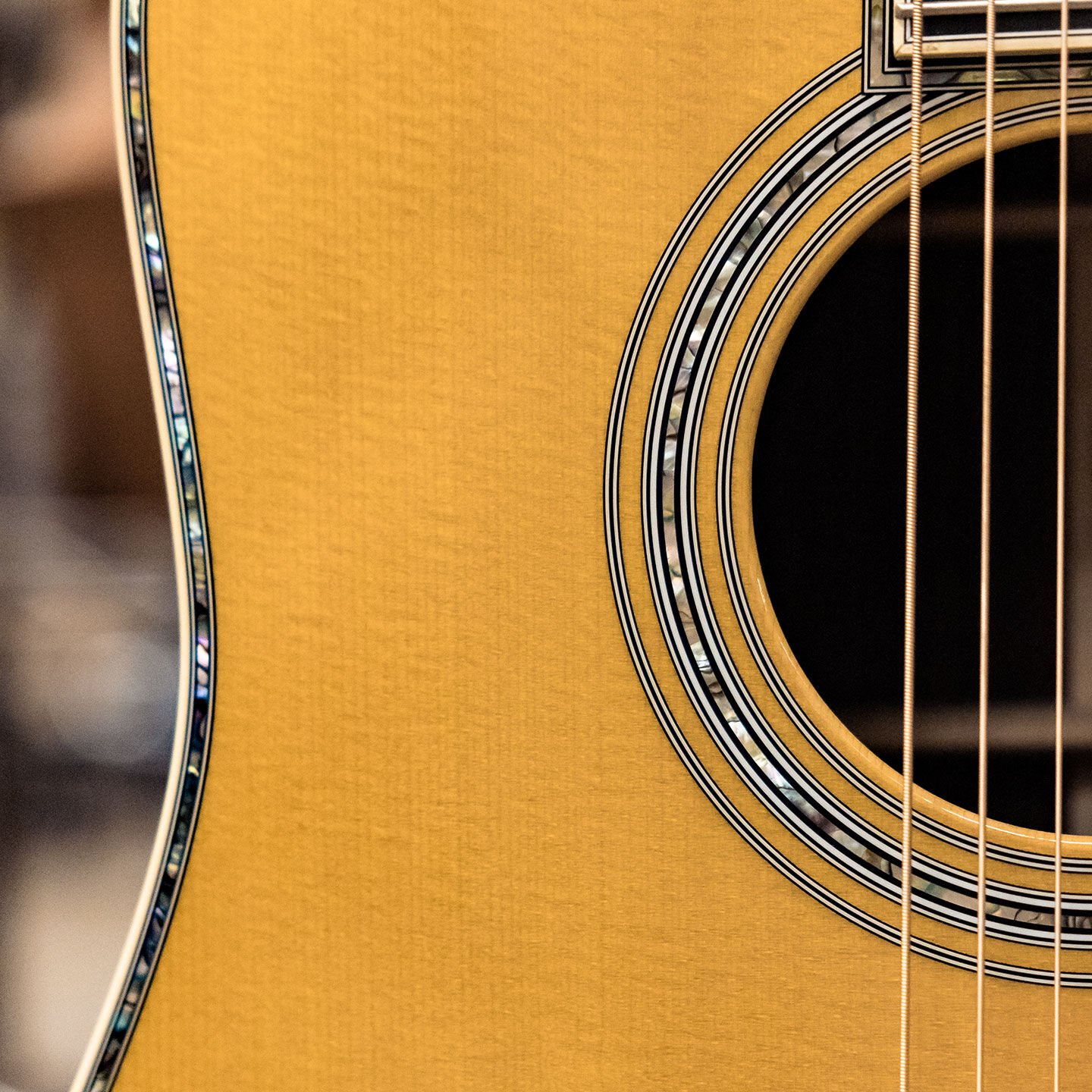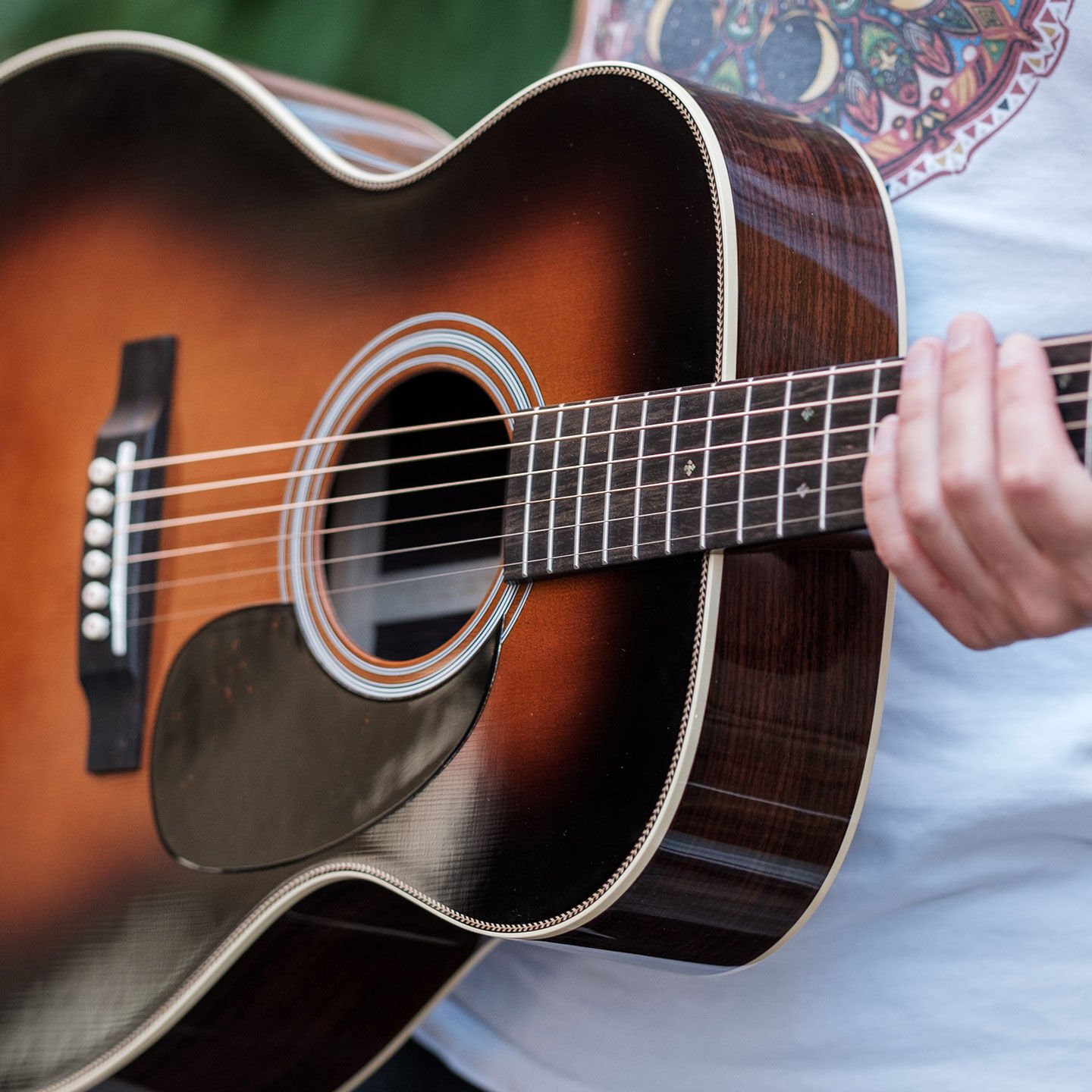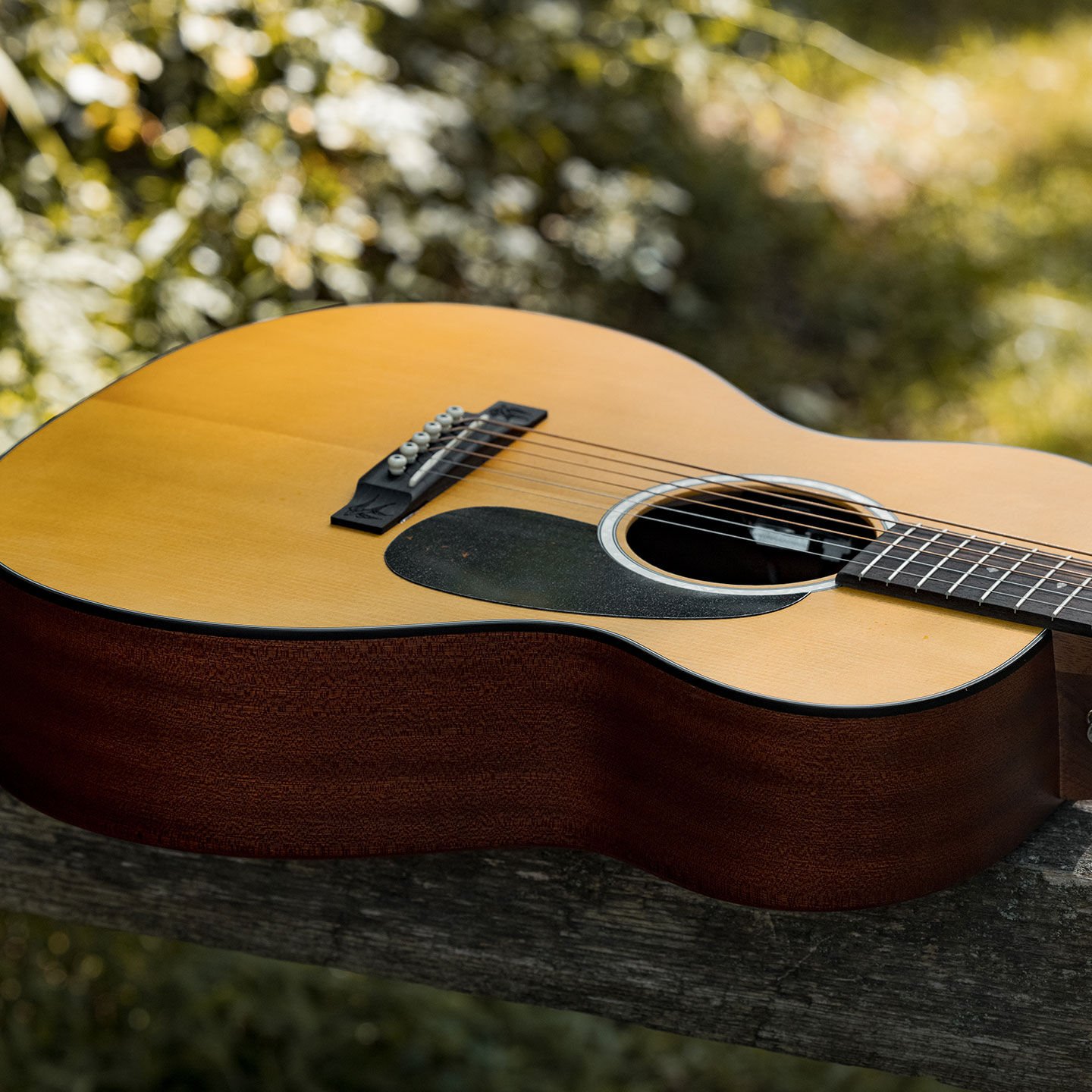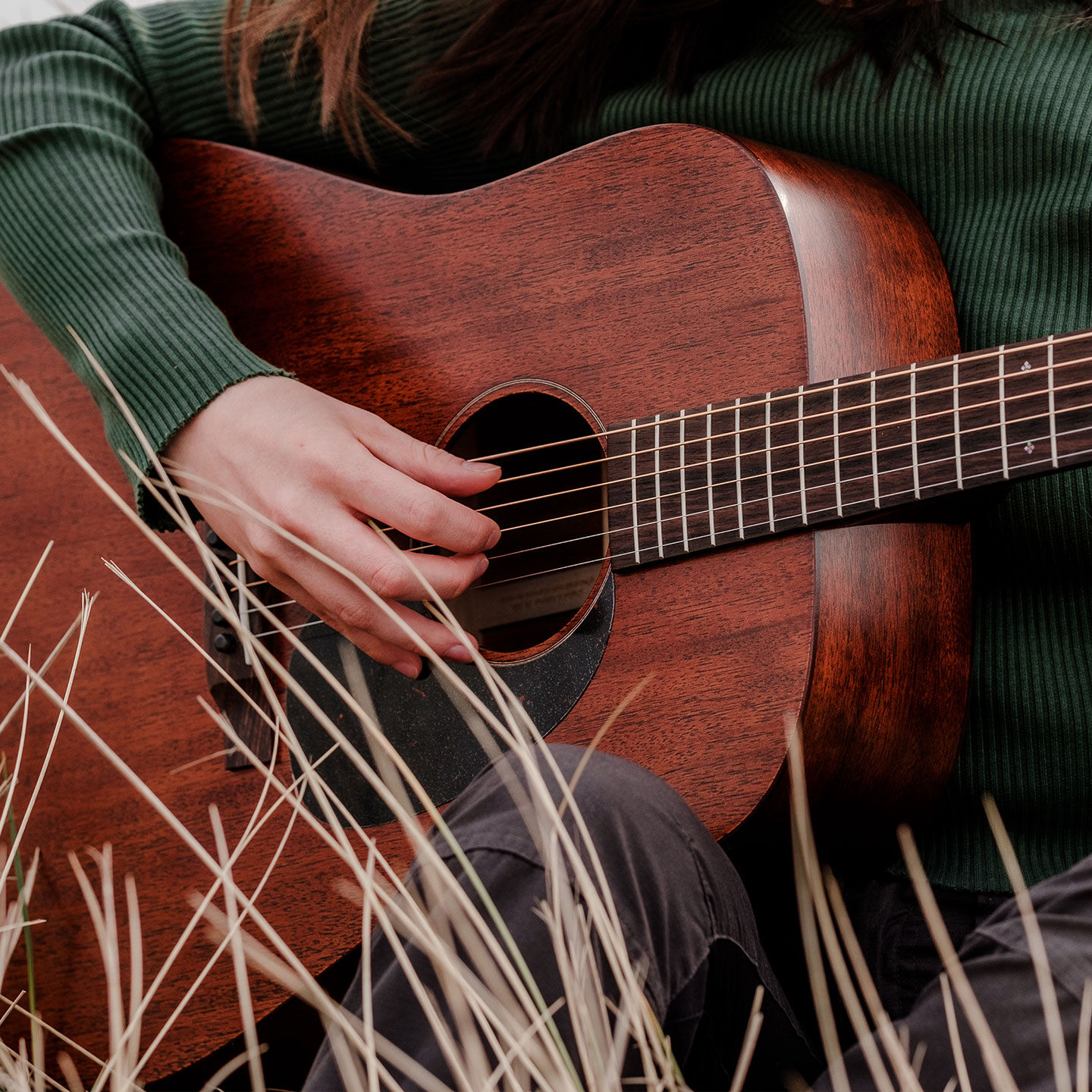From the Factory | October 18, 2023
Acoustic Guitar Top Woods
How Much Do They Contribute to Tone?

When crafting an exceptional acoustic guitar, one of the most critical decisions a luthier faces is choosing the right wood for the top or soundboard. The top wood is pivotal in defining the instrument's tonal character, resonance, and overall sonic personality. In this blog post, we'll dive into the fascinating world of tonewoods for acoustic guitars and explore how different types of acoustic guitar top woods impact the sound of the instruments you know and love.

Understanding the Basics
Before we get into the specifics of various top woods, it's essential to grasp how top woods impact an acoustic guitar's sound. The top wood is responsible for transmitting the vibrations generated by the strings to the body of the guitar, setting the stage for the instrument's tonal characteristics. This crucial role makes selecting top wood a cornerstone in the art of guitar making.

Types of Acoustic Guitar Top Woods
A wide array of woods is used for acoustic guitar tops, each with unique properties and tonal qualities. Some of the most popular choices include:
Spruce: Sitka spruce, Engelmann spruce, and Adirondack spruce are among acoustic guitars' most commonly used top woods. Spruce is known for its excellent stiffness-to-weight ratio, which translates into a bright, articulate, and balanced sound. Sitka spruce, in particular, is renowned for its versatility and is often used in various styles of acoustic guitars.
Mahogany: While mahogany is more commonly associated with guitar backs and sides, it is occasionally used as a top wood. Mahogany tops yield a warm, focused sound with clear note definition, making them suitable for blues and folk genres.
Maple: Maple is known for its bright and articulate sound, often imparting a crisp edge to the guitar's tone. It's commonly used as a top wood in archtop jazz guitars, but its unique tonal properties have also found their way into some acoustic guitar designs.
Koa: Koa is a visually stunning wood native to Hawaii, known for its captivating figure and vibrant sound. Koa top woods produce a sweet, warm tone with a pronounced midrange, making them sought after for their unique aesthetic and sound.
Cedar: Cedar top woods, like Western Red Cedar, offer a warmer and more responsive tone than spruce. They are favored by fingerstyle players and those seeking a softer, more intimate sound with a pronounced midrange and a touch of sweetness.
Sapele: Like mahogany, Sapele top woods provide a warmer sound with plenty of midrange while adding a bit more high-end to your tone, allowing for a variety of playing styles. It’s also a sustainable and affordable choice, with some eye-catching colors and unique grain patterns.

The Effect on Acoustic Guitar Sound
The choice of top wood profoundly influences the overall sound of an acoustic guitar. Here's a closer look at how different full woods contribute to the instrument's tonal palette:
Spruce: Spruce top woods provide clarity, brightness, and excellent projection. They are favored for their versatility and suitability across various music genres.
Mahogany: Mahogany tops add warmth and depth to the sound, making them a preferred choice for blues and folk musicians.
Maple: Maple top woods contribute brightness and clarity, enhancing the guitar's articulation and projection.
Koa: Koa tops provide a unique blend of warmth, sweetness, and midrange emphasis, creating a distinctive and captivating tonal character.
Cedar: Cedar offers a warm, mellow sound with a quick response, making it ideal for fingerpicking and solo performances.
Sapele: Sapele is a versatile top wood that provides a familiar warmth and midrange with added brightness that adapts to any playing style.
To sum it all up, the choice of acoustic guitar top wood is crucial in shaping the instrument's sound and character. Different types of top woods offer a broad spectrum of tonal possibilities, allowing musicians like you to find the perfect match for their playing style and musical preferences.
Whether you seek the bright brilliance of spruce, the warm embrace of cedar, or the unique charm of exotic woods like koa, understanding the role of top woods in acoustic guitar sound is essential in finding the perfect instrument that resonates with your musical soul.
So, next time you strum your acoustic guitar, take a moment to appreciate the harmonious marriage between wood and sound that creates the soul-stirring melodies we all cherish.